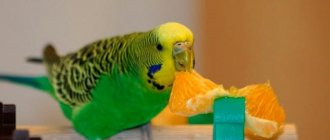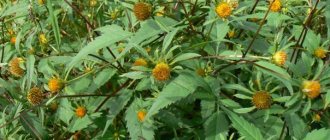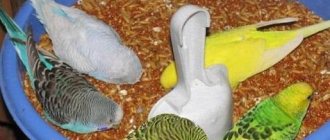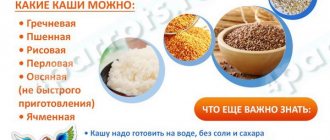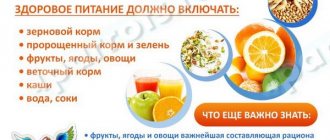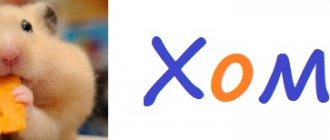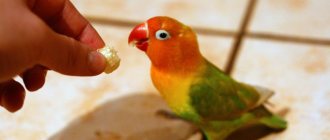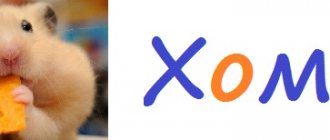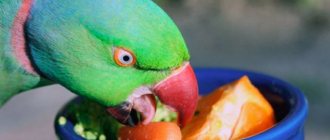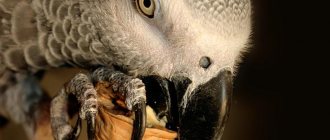In the wild, parrots live in trees. They provide them with shelter and a place to sleep. In addition to the fact that parrots sit on tree branches, they also like to gnaw the bark on the branches. In their natural environment, parrots independently choose those branches of trees and shrubs that they need for health. At home, the parrot is very limited in its choice and can eat branches that are unsuitable for consumption. Also, wild parrots have much stronger immunity than domestic species. Therefore, the owner must know which branches can be given to the parrot and which ones cannot.
Branch food.
Branches are a MANDATORY component of parrot food. You may not have a grain mixture, but ALWAYS have fresh branches.
Parrots eat bark, foliage, buds, phloem (core) of branches, so fresh branches are relevant at any time of the year (in winter they are brooms without foliage, in summer they are lush green bouquets).
The cage should look like a green bush due to the abundance of branches attached to the lattice or standing in a container of water. The branches are easily attached to the cage with plastic construction clamps.
Example: how many branches are needed for a gray parrot.
What herbs should not be given?
Among the forbs there are many specimens, the consumption of which is dangerous for the life of a budgerigar.
This list includes
- dill and cilantro
- onion
- yarrow
- sorrel and spinach
- celandine
- basil
With dill, everything is ambiguous. Some owners claim that their pets calmly eat these greens and feel great. You can try. But you need to start with a small branch, strictly monitoring your pet’s well-being.
It is not recommended to “treat” your parrot with indoor plants; among them there are poisonous specimens.
It is very useful for small parrots to include clover in their diet. This aromatic herb is the key to their full and rapid development.
How to keep branches fresh.
To keep the branches fresh for as long as possible, place them in massive containers with water. Massive - so that they do not turn over due to the height and weight of the branches when birds touch or jump. This method is convenient for small and medium-sized parrots. At the same time, make sure that the necks of the containers are inaccessible to birds, so that parrots cannot reach the water or climb inside.
With the right approach (plant compatibility, container material...), the life of twig bushes in your room will last from 2-4 weeks to 2 months, depending on external factors (dryness and cleanliness of the air, natural light - a lot of sun is bad, without sun is also bad) .
Should I give?
The diet of domestic parrots should be varied. The base is cereals, making up about 60% of the total mass of products.
The rest is supplements: fruits, vegetables and branch food. The latter, in addition to its nutritional qualities, has a practical function.
The bird uses branches to grind down its beak and claws. In the absence of such tools, the pet begins to actively chew the cage frame, bars, toys and other accessories.
Considering that a good half of the equipment is made of plastic and other synthetic, as well as toxic materials, such contact will do more harm than good.
Large breeds of the parrot family have a massive beak. Some individuals crack nuts easily. Therefore, such pets need twig food in any case, otherwise they will have to periodically replace damaged feeders, drinkers, baths, etc.
How to treat branches before giving them to birds?
Many parrot owners are concerned that the branches are dirty and that they can bring some kind of infection. There is no need to worry about this. Firstly, the infection can be brought with anything; grains, fruits, greens, toys - all this is not sterile. Secondly, the biggest source of infections for parrots is yourself; almost all normal human microflora in parrots causes acute or chronic infections. Thirdly, do not be afraid of bringing worms to your parrot - in any case, anthelmintics should be given to all birds, including budgies, twice a year.
There is no need to boil the branches, calcine them in the oven, soak them in vinegar, copper sulfate, potassium permanganate, or scald them with boiling water. First of all, it's useless; This will not eliminate any infections or parasites. Secondly, it destroys nutrients. Thirdly, such measures make the branches poisonous (the bark perfectly absorbs and accumulates everything that you dip the branches into).
Rinse the branches well with cold running water.
The process of preparing twigs for use
This procedure is quite simple and natural. But, at the same time, she is responsible. You need to start with choosing a tree or shrub and end with disinfection. Therefore, it is very important to perform all actions correctly and consistently.
IS IT ALLOWED TO USE TRANCHES FROM THE STREET FOR PARROTS AND HAMSTERS? DO-IT-YOU HAVE YOUR HANDS
- Collecting branches. Even if the plant is on the list of permitted birds, it is necessary to pick the delicacy as far as possible from industrial zones and highways.
- Cleaning process. The branches must be pre-treated: remove dirt, moss, thorns and other formations with a knife.
- Heat treatment. To completely get rid of all microbes, the twigs are soaked in water overnight and doused with boiling water in the morning.
Permitted and prohibited trees for parrots.
Parrots can be given branches of any trees and shrubs growing in Eurasia. Parrots happily eat branches of trees and shrubs that are poisonous to humans and other mammals.
In nature, parrots eat a huge amount of plants that are toxic to mammals; they have evolved to feed on large amounts of tannins, alkaloids and other biologically active substances that make up plants. And this is another reason why parrots get sick in captivity: grain feed and cereals are the cause of parrot diseases. Tree branches are natural healthy food for parrots. Without tannins, parrots develop chronic atony of the smooth muscles of the intestines, oviduct, and ureters. Hence the constant problems with the incidence of megabacteriosis, chronic egg laying, heart failure and other diseases of parrots.
Therefore, when you see somewhere a list of permitted or prohibited trees for parrots, do not waste your time. Just in case, let me clarify - budgies can : maple, oak, poplar, pear, aspen, lilac, chestnut, ash, viburnum, rowan, birch, walnut, cedar, pine, spruce, fir, linden, olive, myrtle, acacia, alder, yew, blackberries, raspberries, currants, hawthorn, pistachio, sea buckthorn, beech, bay, mimosa, citrus, shadberry, sloe, apricots, peaches, quince, medlar, feijoa, bird cherry, mulberry, barberry, elderberry, pomegranate, eucalyptus, Tuyu etc..
Food within walking distance
Any park or square is a source of healthy food for a budgie. When collecting plants, you just need to avoid roadside areas. Grass saturated with car exhaust fumes can negatively affect your parrot's digestive system.
You can safely include the following herbs in your budgerigar's diet:
- dandelion greens
- plantain
- clover
- parsley
- sprouted wheat
- woodlice
Until a few years ago, parsley was believed to be harmful to birds. Recent studies have proven that only the root of the plant can have a detrimental effect. Greens are not only possible, but must be introduced into your feathered pet’s daily diet. Parsley will be an indispensable source of B vitamins, ascorbic acid and iron for him.
It is recommended to germinate wheat for a parrot at home throughout the year. For birds, this plant will be the best prevention of worms, anemia and skin diseases. Wheat germ is a powerful antidote to oxalic acid. And if your parrot accidentally ate spinach or sorrel, sprouts can save the situation.
Plantain is not just tasty and healthy vegetation for your pet. He is the best assistant for various inflammatory processes. Plantain leaf can be applied to any wound, the positive effect will not be long in coming.
It is very useful for small parrots to include clover in their diet. This aromatic herb is the key to their full and rapid development.
You need to introduce different herbs into your parrot's diet. All plants should be washed in running water. The ideal option is to give the bird young vegetation with a delicate structure. The herb can be stored in the refrigerator, and so that it does not lose its original qualities longer, it should be wrapped in a damp cotton towel.
Perches, perches, stands.
All perches in any bird's cages should be made from live branches with bark. Plastic, metal, concrete, and lime perches cannot be used.
On wooden attachments, bacteria and fungi persist for a much shorter time than on plastic or metal surfaces. The bark maintains the natural moisture of the skin of the birds' paws; the bark is edible and healthy. Such perches need to be changed once a month - this is another factor that disciplines animal owners.
A play stand for both a parrot and any other bird should be the bird's main place to spend time outside the cage. And for this, the stand must be interesting and useful to the bird. Here is an example of a simple stand in the bird room at Lyudmila Mengele.
The stand is not a playing field for a person! There is no need to make it from building materials, metal, plastic, pipes, boards!
All birds need bark!
Bark makes up more than half of a parrot's diet. This is the most natural chew. This is a natural substrate for maintaining normal moisture in birds' feet. It is a natural disinfectant.
The stand must be made from unsanded wood (branches, logs). The stand must be changed as the bird eats it. The stand should be a simple structure that you don’t mind throwing away.
Various bells, abacus, toys - this is just a person’s attempt to replace the useful with the interesting. When there are a lot of branches in the room, then toys are not needed at all. Toys are an accessory with which the owner convinces himself that he cares about the bird. Birds need branches, not toys; and if you cut the branches into short bars, you and your parrot will have the best toy).
It is convenient to string pieces of fruits, berries, vegetables, and mushrooms onto branches. All mushrooms edible for humans are edible for parrots and other birds - this is to avoid the questions: “can I eat chanterelles?” and honey mushrooms? and boletus mushrooms?...”
What are they needed for
It is known that in the wild, parrots live in thickets of bushes and trees, so the most natural perch for them is a tree branch.
Modern cages are often equipped with plastic slats, which make it difficult and uncomfortable for the parrot to sit and hold on, which can even lead to deformation of the paws, the appearance of ulcers and calluses. In addition, birds tend to sharpen their beaks and often do this on a perch - of course, plastic is not suitable for these purposes and can even be hazardous to health.
That is why it is recommended to place wooden sticks in the cage for the bird to sit on, or to use the most common branches of certain trees as perches, securely fastening them between the rods. Also, natural wood contains a lot of useful substances, which, when consumed, strengthen the pet’s immune system.
Did you know? In Australia, there is an unusual phenomenon: from time to time, whole flocks of parrots fall from the sky. This is due to the fact that birds regularly eat the plant, which causes a state similar to intoxication and a temporary loss of coordination.
The healing properties of lilac
Lilac is given and recognized as an active folk remedy.
Various medicinal compositions are made from its flowers, seeds, leaves and buds. Lilac raw materials have an analgesic, antipyretic and anti-inflammatory effect. Therefore, for several decades, people have been actively using them in medicine. However, not only people were able to benefit from the plant. Lilacs have become a real miracle find for a parrot. The reason for this is the presence in its composition of resin, essential oils, syringin glycoside and vitamin C.
In a couple of days, one bird can completely gnaw several tree bushes. Therefore, when starting such a pet at home, you should definitely take this fact into account.
Lilacs become a real delicacy for a parrot. He happily eats leaves, flowers and seeds of shrubs.
Lilac in the diet of parrots: branches, buds, flowers, seeds.
Lilac is a deciduous shrub that grows wild in southwestern Europe; Turkey is considered its original homeland. It has long been cultivated in gardens. Trunks are up to 20 cm in diameter, up to 5 meters high. The leaves are ovate, with a pointed tip, and fall green. The bark is gray or grey-brown. The flowers are purple and white, collected in dense pyramidal panicles. The seeds are presented in two-nest capsules. The lifespan of a lilac bush can be more than 100 years.
This is what unripe lilac seeds look like.
“Lilac flowers, bark, buds, seeds and foliage have long occupied their niche in folk medicine as a healing potion for many diseases. This raw material is considered as an analgesic, anti-inflammatory and antipyretic agent. Due to this effect, it is used externally to treat various dermatitis, skin rashes, purulent and long-healing wounds, and bruises. In addition, lilac helps lower blood sugar levels and relieves headaches. According to herbalists, decoctions, tinctures and teas from lilac can cure colds, prolonged coughs, inflammatory processes in the kidneys, and also relieve joint pain due to gout, osteochondrosis, arthritis, rheumatism and polyarthritis.” Source: © Agronomu.com
In nature, small birds feed on lilac seeds.
Lilac flowers and leaves contain the glycoside syringin, resins, alcohol farnesol, and essential oils. The composition of lilac has not yet been thoroughly studied. The leaves also contain a lot of vitamin C.
What to feed your cockatiel?
High-quality food as the basis of the diet
In the wild, this nimble crested parrot has a varied diet, but for a city dweller, ready-made grain food (Versele-Laga, Fiory) is an excellent solution. It’s easy to purchase, easy to store, filling, and lasts a long time. We urge you to consult with a veterinarian or veterinary nutritionist before choosing food. Choose high-quality food specifically for cockatiels; food for other types of parrots is not suitable.
In high-quality food you will find several types of millet, canary seeds, striped sunflower seeds, white sunflower seeds, flaxseeds, rapeseed, oats, rice, buckwheat, peanuts, corn. The grain mixture must contain at least 10 different ingredients. Additionally, the food is enriched with a vitamin complex, selenium, omega-3 for heart health and shiny plumage, and chelated minerals to strengthen the musculoskeletal system. By eating this wealth of useful and nutritious foods every day, your pet will receive good health, strong immunity, vigor and well-being. Whoever chooses high-quality food for a parrot saves on trips to the veterinarian.
Pay attention to the food pellets. The soft cylindrical pellets are very easy to eat with a beak shape like that of a cockatiel parrot. The food must have a good shelf life and be sealed. Check the integrity of the packaging.
Before feeding your parrot, feel and smell the food. A simple test for quality and freshness: soak some food in water. If it is fresh, the grains will germinate quickly. It is better to store food in a tightly closed container rather than in its original packaging.
High-quality food will lay the foundation for the health and longevity of your ward. Changing food will not be easy. If your cockatiel readily eats the option you offer and feels great, you should not switch to another food. But if, for example, your veterinarian recommends you change food, the change should be gradual. Over the course of a couple of weeks, gradually mix new foods into your usual ones. Make the transition as smooth as possible.
Varied diet
No matter how excellent the food is, it cannot cover all the needs of the cockatiel. And you’ll get tired of eating the same thing several times a day. What to feed cockatiels besides food? Vegetables, fruits. Parrots love pumpkin, beets, carrots, pears, and apples. Grate or hang inside the cage, for example, an apple cut crosswise. There will always be seasonal fruits and vegetables in the house with which you can pamper your ward. Please note that avocados, mangoes, papaya and persimmons should not be given to your parrot. Sometimes you can give the parrot a piece of boiled egg, a drop of low-fat cottage cheese.
Every other day or twice a week you can treat your pet to steamed porridge and sprouted oats. In general, we dilute the grain group of products with creativity.
What to feed your cockatiel parrot to replenish its supply of minerals? Sepia (cuttlefish shell) and mineral stone must be present in the cage at all times. To get the necessary minerals, a parrot just needs to peck at a stone and sepia. If you want to sprinkle the floor of the cage with sand, choose small shell rock.
Branch food is no less important. Branches with a diameter of 1.7 to 2.5 centimeters are suitable. There is also a stop list here: parrots should not gnaw branches of oak, bird cherry, poplar, lilac, or coniferous trees. Give your pet only treats that you know are safe. It is necessary to collect branches in an ecologically clean area. Suitable branches willow, birch, apple, willow, linden, rowan, cherry, plum. Collect branches of different trees in bunches and hang them so that the parrots can peck at them a little at a time. Can be hung on a stand or in a cage.
Wild fresh greens or greens that you grow yourself in a pot at home are a good addition to your diet. There is nothing stopping you from preparing and freezing greens and berries for the winter.
The mower plays an important role in the diet of the cockatiel parrot. This is not just a pallet with gifts of nature in which you can merrily bury yourself and rustle. This is an imitation of searching for food in nature. Let the cockatiel feel like a provider. You can put shells, bark, dried berries, charcoal, dried leaves of fruit trees, dried herbs, and ready-made grain food familiar to your ward into the picker. The more varied the contents of the scooper, the more interesting it will be for the parrot to look for goodies in it.
It is important for a parrot not only to eat properly, but also to consume enough liquid. We recommend sticking to filtered tap water. Bottled mineral water may not be suitable for your feathered ward in terms of its salt balance. Fresh water should be available to the parrot around the clock.
No one has canceled the popular treats for parrots with honey in the form of sticks. This gift can be used to reward your pet for good behavior or pleasant melodic trills.
How to make birds interested in food
Even if you regularly include seasonal delicacies in your cockatiel's diet, he may become bored with them. To prevent your feathered friend from losing interest in already familiar dishes, experienced parrot lovers came up with a trick. Change not only the products, but also the methods of serving them. Hung half a pear on a holder in a cage? Tomorrow give me a piece of pear from your palm. Did you put the berries in a bowl? Add them to the scraper tomorrow. And so on.
In pursuit of abundance and variety, it is important not to overfeed your pet. An adult Corella parrot needs about 30 grams of food per day. It makes sense to feed your pet gradually: breakfast, light snack, lunch and dinner.
What could a cockatiel's menu be like for the day? Divide one and a half tablespoons of prepared food into two servings - a hearty breakfast and a modest dinner. In the morning, hang half or a third of a pear in the cage so that the parrot slowly pecks at it throughout the day. A few hours after breakfast, offer your feathered friend some grated carrots. Towards the evening, you can treat your cockatiel with sprouted wheat; an incomplete dessert spoon of sprouted grains will be enough. If a bunch of apple, birch, rowan branches hangs in a cage, and there is sepia and a mineral stone, then everything is fine. You can take this menu as a basis and slightly adjust it from day to day.
We wish your feathered friend to always eat well and be in a great mood!
Harmful or not?
Many caring owners approach the feeding of birds with special trepidation.
Therefore, they do not strive to introduce new products into it. Of particular concern was the claim that lilacs are poisonous to some species of birds. The reason for this is the presence of syringin. However, in practice, such statements are definitely not worth believing. This substance is not only safe, but on the contrary, it is necessary for birds to fully develop. Syringin is a glucoside that, when consumed, is absorbed into the stomach and enters the liver. Where it undergoes metabolism, becoming each component built into the composition of hormones. Thus, this substance plays an important role in metabolic processes.
Of course, an excess of syringin can cause harm to the body. However, in order to get an overdose, you need to consume more than one kilogram of lilac at a time, which the bird definitely cannot do.
Thus, lilac for a parrot is an important product that has a positive effect on the pet’s health. Therefore, it can be safely given to parrots, regardless of their species, size and age.
Source
